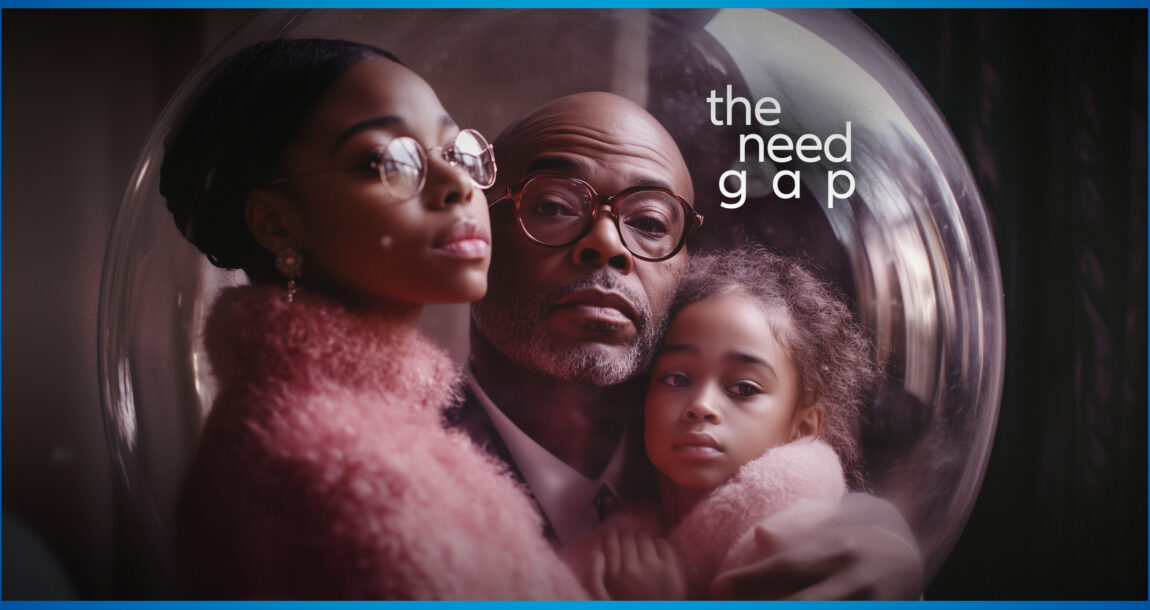The need gap: How does the industry reach underserved communities?

The life insurance industry has documented the need gap that exists in underserved communities. But why does that gap exist? And how does the industry bridge the gap? A former Lincoln Financial executive shared his thoughts during a recent Society of Insurance Research event.
Stafford Thompson Jr. is a former senior vice president of life and executive benefits business management at Lincoln. He started by quoting some statistics from LIMRA on the life insurance need gap.
The need gap is defined as an individual’s or household’s total life insurance needs minus the existing life insurance coverage they have in place. But getting a consumer to understand their life insurance need comes with some stumbling blocks, Thompson said.
Barriers to life insurance purchase
The biggest barriers to getting a consumer to buy life insurance, he said, are:
- “I don’t know how much I need.”
- “I don’t know how much it costs.”
- “I didn’t know I need to participate in figuring out how much I need.”
- “I don’t understand the products you are pushing.”
“The challenge is getting people to prioritize life insurance,” Thompson said. “We need to get folks to understand how much they need. We need to get folks to understand how much it costs because they imagine it costs too much. And we need people to participate in helping to figure their insurance need.”
Thompson gave some perspective on Black Americans and the life insurance industry. Black Americans were first insured as property before they were insured as people. Eventually, Black entrepreneurs formed mutual aid societies and fraternal organizations that became the roots of the Black-owned life insurance companies. But that industry is all but gone, he said.
Underserved communities
Today, a sizeable percentage of underserved communities have no life insurance, LIMRA research showed. In those underserved communities, 39% of Hispanic adults, 34% of Black adults and 26% of Asian adults have no coverage.
One encouraging finding from LIMRA’s research, he said, is that 70% of Black adults and 50% of Hispanic adults said they intend to purchase life insurance but haven’t gotten around to it.
Why not? Thompson had some thoughts.
“They don’t know how much they need. They don’t know how much it costs. They don’t know where to go to figure out what they need, and they don’t realize they have to participate in the process of calculating the need.
“We have some work to do.”
Bridging the need gap is the responsibility of the industry, the carriers and the consumer, Thompson said.
Carriers must do a better job of meeting people where they are, he said, starting with the insurer’s marketing material.
“Don’t your marketing materials always show someone who looks like they already know everything about life insurance?” he asked. “But when you start talking about diverse groups, they’re not here. There’s an educational need.”
Financial literacy cited
In addition, he said, the industry needs to help consumers improve their financial literacy. “If we can get people who are educated and get them a little more educated, we can get them to help tell the stories for us.”
Thompson called for the industry to retool the way it approaches the marketplace.
“Let’s not assume everybody knows everything, then let’s execute some thoughtful strategies that will help close the gap. We’ve got to meet people where they are, which means we need to understand where they are and we’re not there as an industry. I think that’s our responsibility.”
Consumers also have a responsibility, he said.
“The consumer must prioritize life insurance as they do other expenses. If they prioritize it, they’ll find the money.”
Members of underserved communities often mistrust insurance companies. Thompson suggested using tools such as Instagram, TikTok and generative artificial intelligence “to connect with consumers in a way they’ve never been connected with before to get this information in their hands.”
© Entire contents copyright 2024 by InsuranceNewsNet.com Inc. All rights reserved. No part of this article may be reprinted without the expressed written consent from InsuranceNewsNet.com.
Susan Rupe is managing editor for InsuranceNewsNet. She formerly served as communications director for an insurance agents' association and was an award-winning newspaper reporter and editor. Contact her at [email protected].





STLDI plans in for some big changes
Reinsurance asset testing guideline could run afoul of existing agreements
Advisor News
- Is there a mismatch between advisor marketing and consumer preferences?
- State health plan users may see premium increases under SC House budget proposal
- Advisor: SEC trying to ambush my defense on bad annuity sales charges
- Partner split: Grant Cardone and Gary Brecka swap charges in dueling lawsuits
- 4 things every federal worker should do to safeguard their benefits
More Advisor NewsAnnuity News
Health/Employee Benefits News
- President of Insurance Brokerage Firm and CEO of Marketing Company Charged in $161M Affordable Care Act Enrollment Fraud Scheme
- STATEHOUSE: Senate Republicans approve limiting health insurance program for Hoosiers
- State health plan users may see premium increases under SC House budget proposal
- Senate Republicans approve limits on health insurance program
- Health agents ‘optimistic’ as a new administration takes charge
More Health/Employee Benefits NewsProperty and Casualty News
- WNS Recognized as a ‘Leader’ in Insurance Services by ISG
- Insurance commissioner, legislative leaders join forces to introduce proposals for wildfire mitigation and recovery
- Conning research: Insurers must be flexible in the 2025
- CT auto insurance rates headed for increases in 2025. Here’s why and what could drive it even higher
- Out-of-state fires, loss of local fire resources threaten Wyoming homeowners insurance
More Property and Casualty News